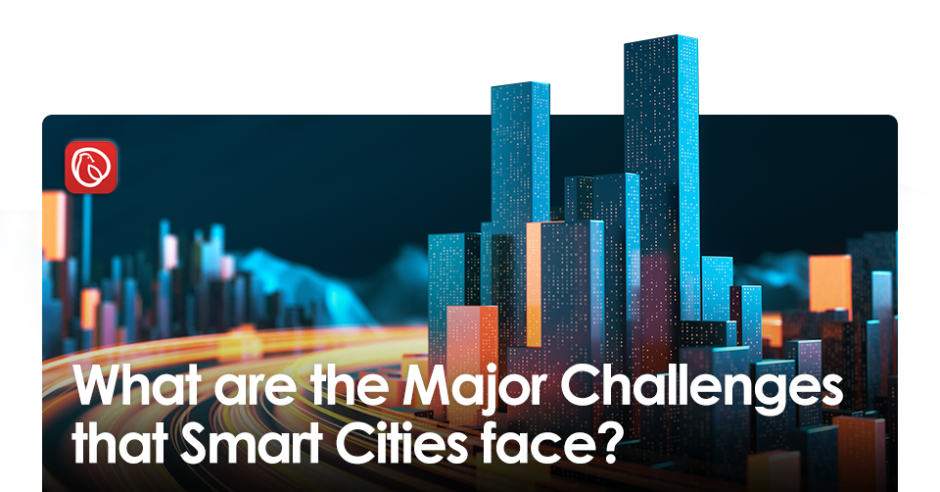What are the Major Challenges that Smart Cities face?

Smart cities are mushrooming across the globe. Countries are making use of technology, the defining factor of smart cities – to make gains in sectors of health, education, mobility, energy use and urban governance. While it is heralded as a game-changer by various stakeholders primarily due to its revolutionary working mechanisms, it has also received its fair share of criticism. Researchers claim that unequal access to technology coupled with unequal opportunities will create disparities, leading to social stratification. Nonetheless, the digitalisation of societies remains an undisputed truth. Yet, in order to reap the full benefits of technology and the subsequent adoption of smart cities, their challenges need to be discussed.
The challenges faced by smart cities are manifold, and their problems are multidimensional. Graana.com identifies the difficulties faced and provides an analysis of its barriers.
- Assimilation of Knowledge
The main ingredient of smart cities is the use of technology. The assimilation of this knowledge for citizens will be a prominent challenge faced in the new dynamics of a smart city. The greatest threat to the citizens is the question of privacy and the quality of life where data related to the households and private information is concerned.
The introduction of technology in everyday life can be bliss as well as a curse. There is a chance that technological advancements will replace the work done by human resources causing unemployment and fragmentation of the social fabric. Moreover, it can further contribute to poverty and inequality. There are also chances that it will cause social stratification where people in urban and rural areas will be affected and marginalized differently. This will further contribute to inequality. In addition, the introduction of technology will severely impact the ageing population that is not receptive to new advancements. Their training will be time-consuming and cumbersome.
- Provision of Services
The method of services provided will be a new area of concern. The employment of technological modifications is largely left to two channels: top-down or bottom-up. The top-down approach suggests that the implementation of sustainable mechanisms in smart cities are left to the large companies that have the resources and the technical know-how to successfully implement the assessments. The downside of this approach is that these top-down giants amass the power to act as monopolies which ultimately acts as a deterrent to creativity.
The bottom-up approach is the other viable solution. The approach suggests that the government makes use of small-scale technological hubs and other grassroots initiatives. The rationale behind this approach is that the grassroots have immense potential that can be untapped to enhance creativity and free-thinking. This will allow for creative solutions on multiple fronts. However, the weakness of this line of action is that the fragmented initiatives will be difficult to monitor and a cohesive action plan will be demanding to achieve. This will compel the government to take the center stage and resolve issues, if and when they arise.
- Infrastructure Development
The development of infrastructure is the backbone of the economy in today’s society. Developed infrastructure automatically translates into the wellbeing of its citizens. For the development of smart cities, it is imperative to develop the requisite infrastructure to sustain the developmental projects. However, most developed cities are already ensnared in challenges related to population growth and old infrastructure. The condition in some cities is abysmal. There is an absence of proper sewage systems, inadequate housing facilities and an underdeveloped road network.
With a move towards making cities more efficient and ‘smart’, there will be a need to develop the already underdeveloped infrastructure. The resources available to do that are already scarce, and the bureaucratic protocols to get approval are tedious. If approved, new technological devices are not welcomed by the people with open arms. It takes time for people to get accustomed to changes.
- Strategic Assessment
Since the concept of smart cities is a relatively new one, it is incumbent to conduct a strategic assessment of the steps undertaken to make cities more technologically advanced. For this purpose, assistance will be required to identify the problems faced and then develop and implement the best practices and methods to address the issues. It helps analyse the mistakes taken in the past and provide an opportunity to rectify them for the future. Moreover, it will aid in the assessment of the proposed solutions in order to check their viability.
It should be borne in mind that while developing the indicators for the usage during these strategic assessments, special attention should be paid to the indicators that will measure their effectiveness. It will ultimately give shape or define the characteristics or key features of a smart city. Furthermore, attention should be given to differing interests and ways should be formed to mitigate conflicts. For example, these conflicts may arise between sustainability factors such as the conflict between food production and biofuel or within sustainability factors such as a conflict between biodiversity and biofuel production.
This post has been produced in collaboration with the sponsor.
Related Posts
PTA, FIA Take Action Against Illegal International SIM Sales
ISLAMABAD: The Pakistan Telecommunication Authority (PTA), in collaboration with the Federal Investigation Agency (FIA) Cyber Crime Wing, has launched a nationwide crackdown against the…
Shell Pakistan’s Profit Falls to Rs3.3bn Amid Wafi Energy Acquisition
ISLAMABAD: Shell Pakistan Limited (PSX: SHEL) has reported a sharp decline in its annual profitability, with profit after tax dropping to Rs3.3 billion for…














